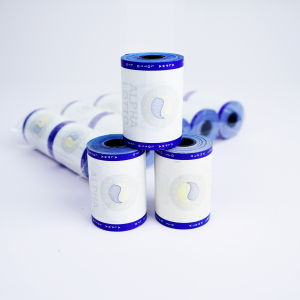When it comes to printing, choosing the right thermal paper is crucial to getting high-quality results. Thermal paper is widely used in various industries, including retail, healthcare, hotels and more. It’s important to understand the different types of thermal paper available and how to choose the best option for your specific printing needs.
1. Consider applications
The first step in choosing the right thermal paper is to consider its purpose. Different applications may require different types of thermal paper. For example, if you’re printing receipts for a retail business, you’ll need thermal paper that’s durable and long-lasting that can withstand handling and storage. On the other hand, if you’re printing shipping and logistics labels, you’ll need thermal paper that’s stain- and fade-resistant.
2. Understand the types of thermal paper
There are two main types of thermal paper: direct thermal and thermal transfer. Thermal paper is coated with a heat-sensitive layer that darkens when in contact with a thermal print head. This type of paper is commonly used for printing receipts, tickets, and labels. Thermal transfer paper, on the other hand, requires a ribbon to transfer the image to the paper. This type of paper is commonly used for printing high-quality images and barcodes.
3. Quality and durability
When choosing thermal paper, it is important to consider the quality and durability of the paper. High-quality thermal paper produces clear and sharp images, while lower-quality paper may cause prints to fade or smear. In addition, the durability of the paper is also important, especially when it is used for receipts or labels that need to withstand handling and environmental conditions.
4. Size and thickness
Thermal paper comes in a variety of sizes and thicknesses. Paper size depends on the specific printing device used, so it’s important to choose a size that’s compatible with your printer. Additionally, the thickness of the paper also affects its durability and lifespan. Thicker paper is more durable and less likely to tear or fade over time.
5. Environmental considerations
It’s also important to consider environmental factors when choosing thermal paper. Some thermal papers are coated with chemicals such as BPA, which can be harmful to the environment. Look for thermal paper that is BPA-free and environmentally friendly, especially if you are printing receipts or labels that will be thrown away after use.
In summary, choosing the right thermal paper for your printing needs is crucial to achieving high-quality and durable printing. When making your choice, consider the application, understand the type of thermal paper, and prioritize quality, durability, size, thickness, and environmental factors. By considering these factors, you can ensure you’re using the best thermal paper for your specific printing needs.
Post time: Mar-18-2024



